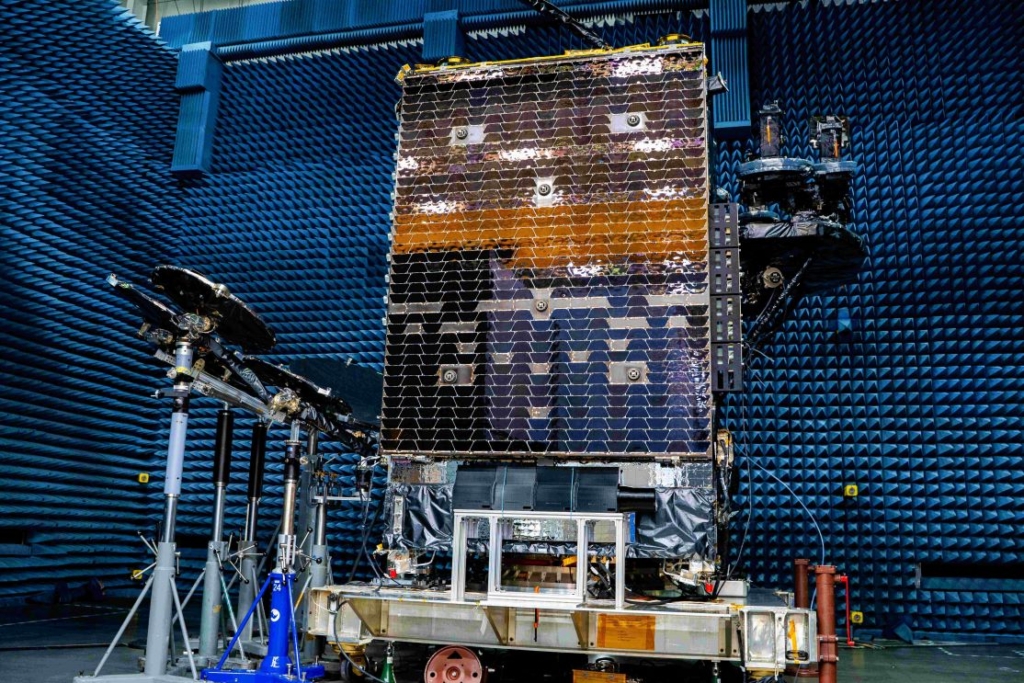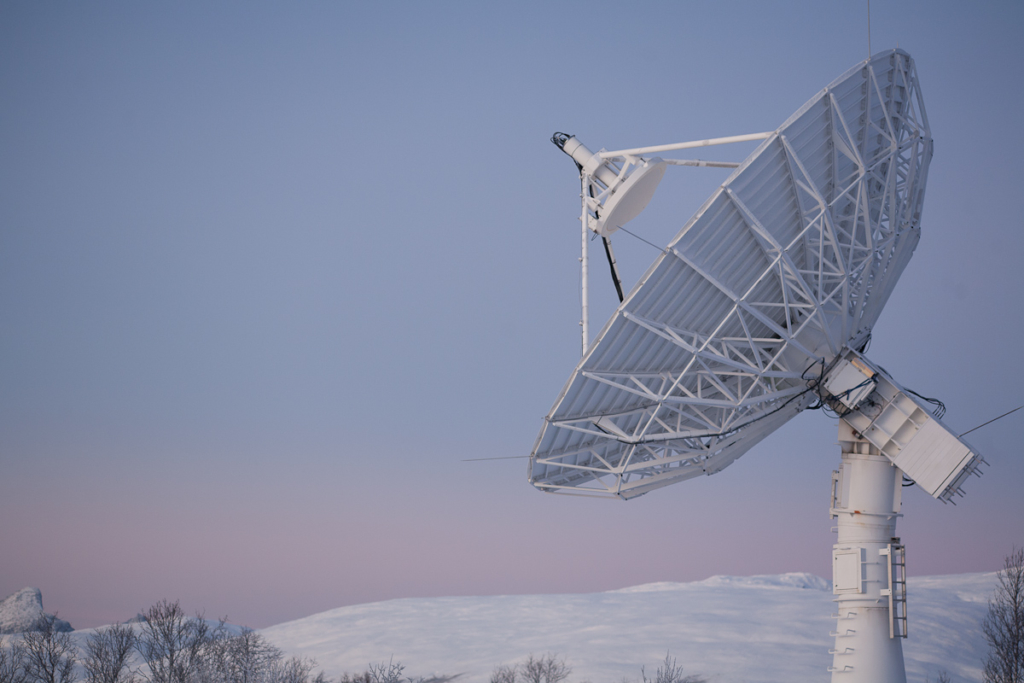Security measures for a satellite operation means assessing everything from physical risk at a ground station to cyber attacks in space and space debris. The operation must be aligned with the current security threats. Simple, but very complicated.
Any Norwegian space project is international in its execution. We have world class competence, but we are a small player in the space industry. In 2024, Space Norway launches two highly elliptical satellites that will provide broadband to the Arctic. The two satellites in the ASBM programme (Arctic Satellite Broadband Mission) are being built in the US and will cover and transmit to American soil. We interact with both suppliers and customers here (read this article on Landing Rights in the US) in addition to our Norwegian and British customers.
Security is especially important when the operation takes place in space and on the ground at the same time, and it is equally important to cooperate well with customers and suppliers on security matters. The measures we must take into consideration span from physical and digital protection of the ground stations to operating the satellites in a secure fashion and to the protection of software and systems on board the satellites. Obviously, there is a whole range of different risks that can occur in such a wide scope. A satellite will not be exposed to the same physical threats as the ground stations, such as flooding for example, but the operation as an entity must consider everything that can happen on the ground and in space at the same time. Security is seen in three dimensions: Confidentiality protects the values; integrity protects information and makes sure it does what it is supposed to do and finally availability provides what you want when you want it.
So how does one cover such an elaborate and important issue, with so many variables and with customers and suppliers from different countries with different rules and demands? A common set of rules and standards is a good beginning.
To cover all these considerations as simply as possible in cooperation with our partners, Space Norway uses the American NIST as a framework. NIST (The National Institute of Standards and Technology) offers framework and guidelines using open standards and suggestions for measures to secure operations and information through developing policies and procedures tailor made for our needs. This institute does not have power of enforcement nor powers of revision, but it offers a wide range of security standards, from the smallest nano particle tool to global communication networks. They offer principles for procedures and detailed suggestions for the whole process.
Space Norway’s security team works with specialized consultants in implementing these procedures for our ASBM operation. To us, it is essential to be credible towards our national and international customers, and NIST is an important common basis for our security efforts.
22/09/2022
Article from High North News: Taking Network Coverage in the Arctic to New Heights
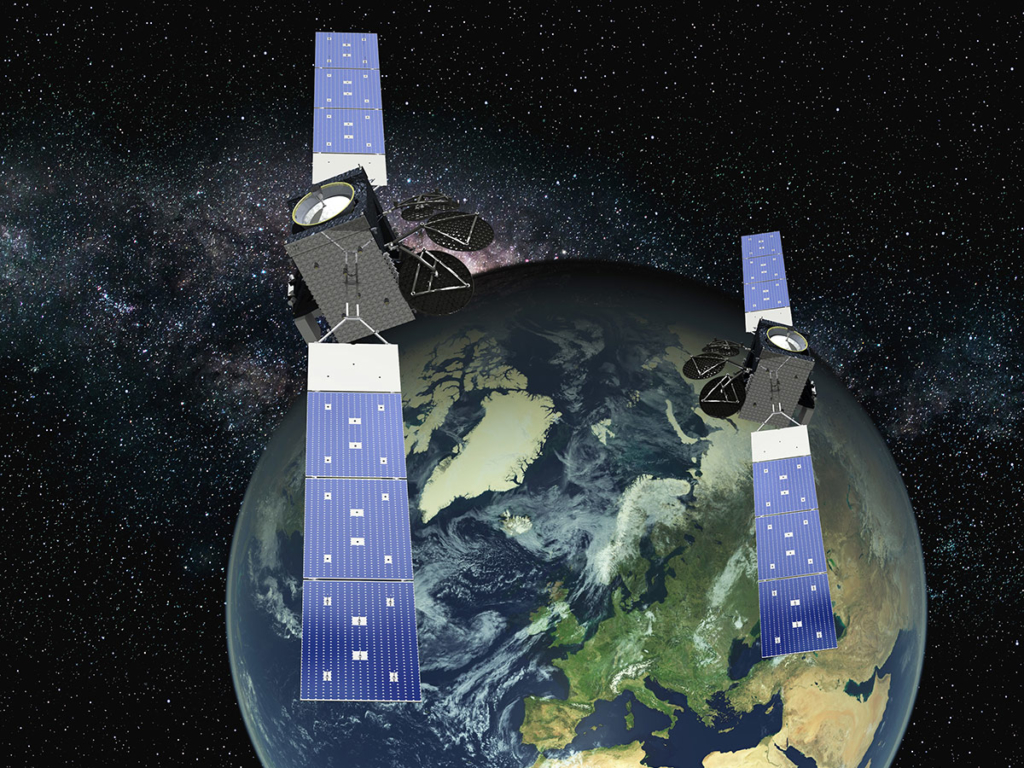
This is an article from High North News written by Astri Edvardsen, published on 20.09.2022.
With satellites in a highly elliptical orbit above the North Pole, Space Norway's program will provide broadband coverage throughout the Arctic from 2024. "This contributes to show that Norway is serious about its High North Policy," says the program director in the state-owned company.
Next fall, two satellites will be sent out into space to provide broadband coverage throughout the circumpolar Arctic for the first time.
The venture Arctic Satellite Broadband Mission (ASBM) is signed by the Norwegian state-owned company Space Norway, which is under the Norwegian Ministry of Trade, Industry, and Fisheries.
The launch will take place on the US west coast under the auspices of Elon Musk's company SpaceX.
09/09/2022
Don’t interfere! – Frequencies in space
Radio frequencies are shared resources, and that makes global cooperation necessary. Making order and predictability in frequency allocation is a time consuming and very complex task. To any outside person, calculating which satellites will transmit when and where and on which frequency, without interfering with each other, would seem like an infernal game of pick-up sticks. Thousands of satellites orbit the globe at any given moment, transmitting to their ground stations. How to secure free transmission, without interfering with signals from all the other satellites?
In 2015, Space Norway decided to launch two highly elliptical satellites for polar orbit. A launch like this demands a lot of planning, time, money, bureaucracy – and a lot of computer calculation capacity. A planned launch means you notify on behalf of a state, not a company, your predicted frequency requirement. This notification is delivered via the national communications authority to the International Telecommunications Union (ITU), a United Nations’ body for space frequency coordination. Space Norway’s strategy was to make as many and high quality simulations as possible, in advance of the notification. This is a complicated strategy since the notification must be delivered many years before the program knows exactly what its customers will need.
When satellites transmit on frequencies close to another, interference is very likely. New satellites must know that its transmissions down to its ground stations will not interfere with existing patterns of transmission. Two causes are the most likely to create noise; one is other satellites and the other is the weather, especially rain. Any satellite operator must reach an agreement with other operators that their satellites will not create interference for the other’s signals. This issue is solved in many long meetings where the newcomer brings along simulations showing predicted interference.
The regulations system used by the ITU to allocate frequencies were made a long time ago, and it is designed for geo stationary satellites. Since the system was introduced, a lot more traffic has been added, and the technology used is much more advanced. Geo stationary satellites do not move across the horizon, they move with the same speed as the earth’s rotation allowing them to transmit directly down to their ground stations all the time. Satellites in polar orbit will continuously move towards or away from their ground stations, resulting in more interference, and that is much more complicated to calculate. Coordinating the frequencies between polar and geo stationary orbits is very complex.
When Space Norway started working with the frequencies for its HEOSAT program, there were no models for calculating interference for non geo stationary satellites. All modelling and simulation tools had to be developed from scratch. These computations are so complicated that most computers would kneel: To estimate interference, one must calculate how the signals will hit approximately every second. For accurate statistical purposes, you need to calculate every second for two days. Two days have 172,800 seconds, resulting in several tens of billions of computations to make accurate simulations.
Once this job is done, you need to reach an agreement with the other satellite operators. Agreeing that the calculations made are correct, is the first hurdle, and agreeing that the statistics are correct is the second. Then the hard part starts. The next stage is agreeing on how much interference actually poses a problem and how much noise you can live with. This exercise is done with all nearby operators.
As if this was not complicated enough, some nations demand that you apply for market access on their territory. This brings a new set of regulations that must be adhered to, combined with more long-lasting discussions. Frequency coordination is a never-ending task. New operators with plans for new satellites bringing new notices to the table is the status quo.
The ITU is not an enforcing agency, meaning they have no authority to decide how two operators agree on frequencies. This means that as long as we all have a common interest, the pieces normally fall into place. Not surprisingly, not all operators always play by the same rules, making it a time consuming exercise to reach agreements.

08/09/2022
Minister of Trade and Industry visits Space Norway in Dulles, USA
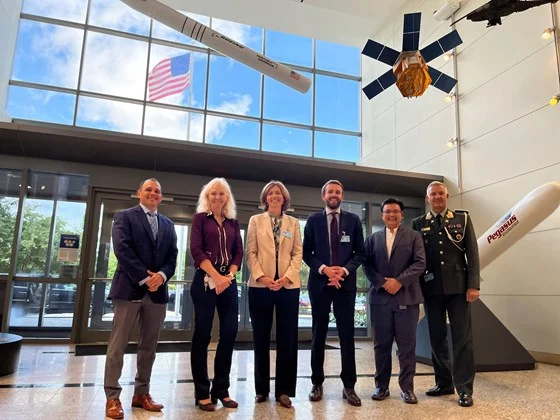
Minister of Trand and Industry Jan Christian Vestre visited the US in September 2022 . The purpose of the visit was to strengthen the historically deep industrial relations between the two countries. The agenda was further and more targeted cooperation within green tech and opportunities for Norwegian businesses.
The Minister visited Northrop Grumman in Dulles, Virginia on 8th september together with Ambassador Anniken Krutnes. They received an orientation on the building of Space Norway's Arctic satellites. Space Norway entered an agreement with Northrop Grumman in 2019 on the building of two large satellites with military and civillian broadband communication in the Arctic. The satellites will be launched by SpaceX in mid 2024.
26/08/2022
Press release: Space Norway builds radar satellite system for real-time maritime surveillance
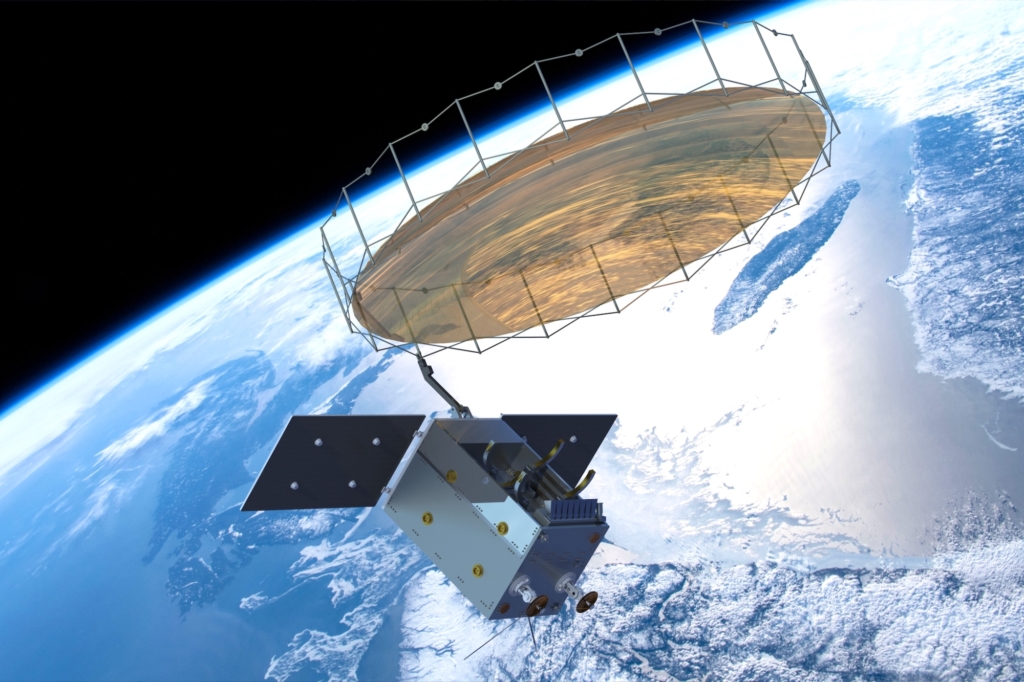
On the 25th of August 2022 Space Norway AS signed contracts with vendors and will immediately start building a radar satellite system optimized for maritime surveillance in Norwegian areas of interest.
The payloads will be developed and built by Norwegian suppliers, while the satellite bus and the radar antenna will be built in the UK. The first satellite will be launched early 2025. In the following years, the plan is to launch a number of radar satellites to establish a constellation.
The satellite system named MicroSAR is unique in the way it can detect relatively small vessels in a very large area simultaneously. As of today we don’t know about any radar satellite systems with the same mix of capabilities.
Norway’s sea areas are seven times larger than the Norwegian land area. The Arctic and the High North is Norway’s most important strategic area of interest. This puts strong requirements on situational awareness in these areas. AIS (Automatic Identification System) has for many years been used for maritime surveillance. The challenge is that AIS is a system that requires the vessels themselves to send the required and correct AIS Information. Hence, AIS is a system based on cooperation. Today we estimate that 5 % of the vessels either does not send out AIS Information or are transmitting false information. Satellites with a radar, such as MicroSAR, will be able to detect these vessels independent of the use of AIS. MicroSAR satellites will bring an AIS Receiver to correlate radar detections with AIS Information.
The MicroSAR System is optimized for covering Norwegian needs. However, it will also offer and deliver maritime surveillance services in a global market in the same way as other radar satellites in space today, including surveillance of ship traffic, combating illegal fishing, search and rescue and oil spill detection.
Space Norway works closely with the Norwegian Armed Forces who will be the main customer and buy services and products from MicroSAR when in operation.
Space Norway also work in close cooperation with Kongsberg Satellite Services (KSAT). KSAT establishes, operates, and owns the MicroSAR Ground System, utilizing their existing global network. On behalf of Space Norway, they will provide services related to satellite operations and downlink of MicroSAR data. KSAT will also be responsible for marketing and sales of MicroSAR services and products as part of their portfolio, both in a national and an international market.
The Satellite System will be owned and controlled by Space Norway. This gives Norway an important strategic independent capability under national control to cover their needs for maritime surveillance.
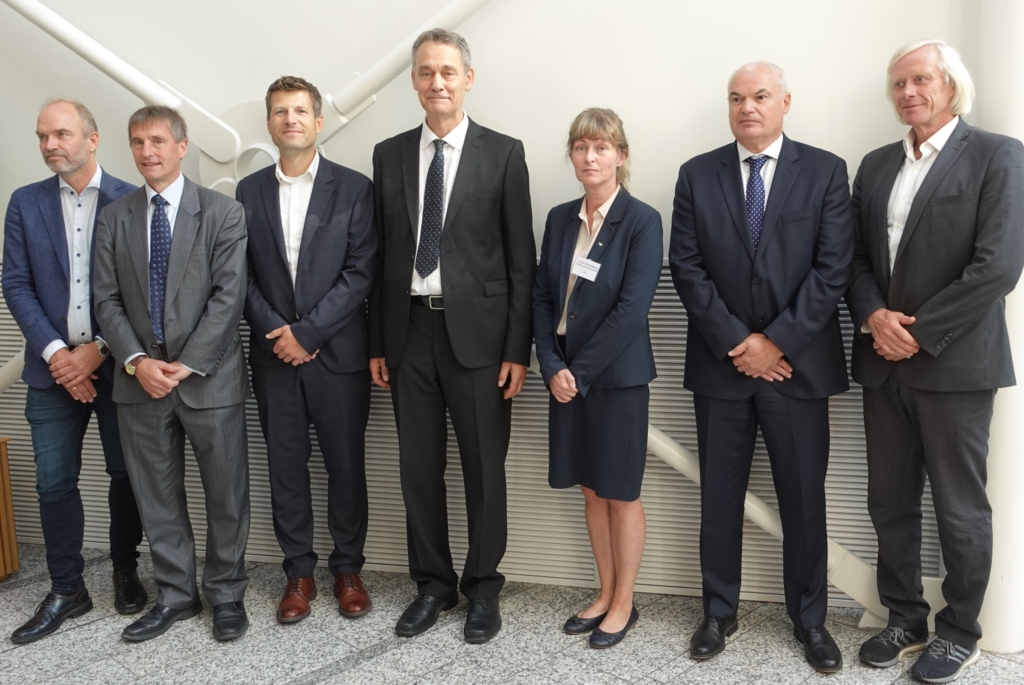
Space Norway has signed contracts with the following vendors to build the first MicroSAR Satellite:
Surrey Satellite Technology Ltd (SSTL) is a UK company with long experience in building satellites. SSTL will deliver the satellite platform and be responsible for integration of the payloads on board. SSTL will also be responsible for building the radar antenna through their sub-contractor Oxford Space Systems (OSS).
The payloads will be developed and produced by the Norwegian companies WideNorth, Eidsvoll Electronics (EIDEL), Kongsberg Seatex and Norwegian Defence research Establishment (FFI). Hence, the project will also contribute significantly to business development of Norwegian companies.
Space Norway’s current plans are to launch the first satellite on a SpaceX Falcon 9 as a Rideshare. When establishing a constellation, the satellites will be launched on dedicated launchers. The establishment of Andøya Spaceport may result in future MicroSAR satellites being launched from Norway.
The MicroSAR satellites will follow polar orbits in various orbital planes at an altitude of about 600 km and will weigh about 300 kg.
Contact person:
Dag H Stølan
CSO and Director Infrastructure
Phone: +47 400 29 601
E-mail: dag-hugo.stolan@spacenorway.no
29/06/2022
Preparing for launch
A group of engineers and operators from Space Norway are currently visiting the British satellite operator Avanti in Goonhilly in Cornwall, to attend satellite operations courses. The team is strengthening their competence in satellite control and operations as a preparation for the upcoming launch of the ASBM (ASBM, Arctic Satellite Broadband Mission) satellites in 2024.
Satellite communications is understandably associated with strict security requirements and require highly dependable ground systems. The satellite operations control centre monitors the satellites 24/7. Telemetry is downloaded from the satellites and processed to ensure that all systems are operating per specification. The satellite operators work continuously in conjunction with the customers to qualify the mission requirements. The uniqueness of ASBM due to its highly elliptical choice of orbit as well as the close collaboration with its international partners Inmarsat, the Norwegian Armed Forces and the US Space Command, places significance on the development of a solid organization for satellite operations.
The Norwegian engineers are trained for a duration of two months at the British operator Avanti. Avanti was chosen for this assignment because it utilizes the same satellite operations software as Space Norway has implemented for ASBM. By participating in this training program, Space Norway ensures that its operations team holds solid competence in satellite operations prior to launching the satellites in the summer of 2024. Birger Johansen is leading the engineers from Space Norway and KSAT, and he believes they have benefited greatly from attending this training program in Goonhilly. – Our personnel collaborate very well with the satellite operators from Avanti. We have met persons with Avanti who hold a similar mindset as what we are used to from our organizations. There is a flat hierarchical structure in the company, and they share the same approach to problem-solving. The cultural similarities enable the training to be particularly efficient in readying our team for operating the satellites after launch, and contributes to significantly reducing the operational risk, states a satisfied Johansen.
The two Norwegian HEO-satellites shall be operational within one and a half year. They represent the first satellites from Western space industry to circulate the Earth in high-elliptical orbits across the two poles.
The ground stations have already been built in Tromsø and at Bardufoss and are ready to receive and process the information coming from the two satellites. Space Norway and KSAT are collaborating closely to prepare a round-the-clock, 24/7 organization for operating the ground stations once the satellites are operational in orbit.
Important test of the ground stations for ASBM
The HEOSAT-project has reached a key milestone and began end-to-end testing of the ground segment (for the satellite system) during the second half of June.
In the summer of 2024 two large satellites will be launched into a highly-elliptical orbit going across the north pole. ASBM (Arctic Satellite Broadband Mission) is Space Norway’s major initiative to pioneer providing broadband communication to the Arctic region.
During the construction of the two satellites there is a major test program implemented to ensure that all the equipment onboard is built to sustain the extreme conditions offered in a space environment and experienced during a launch. The testing involves exposing the individual satellite components to temperatures, radiation levels and vibration levels equivalent of those experienced during launch and in space.
During the construction of the two satellites there is a major test program implemented to ensure that all the equipment onboard is built to sustain the extreme conditions offered in a space environment and experienced during a launch. The testing involves exposing the individual satellite components to temperatures, radiation levels and vibration levels equivalent of those experienced during launch and in space.
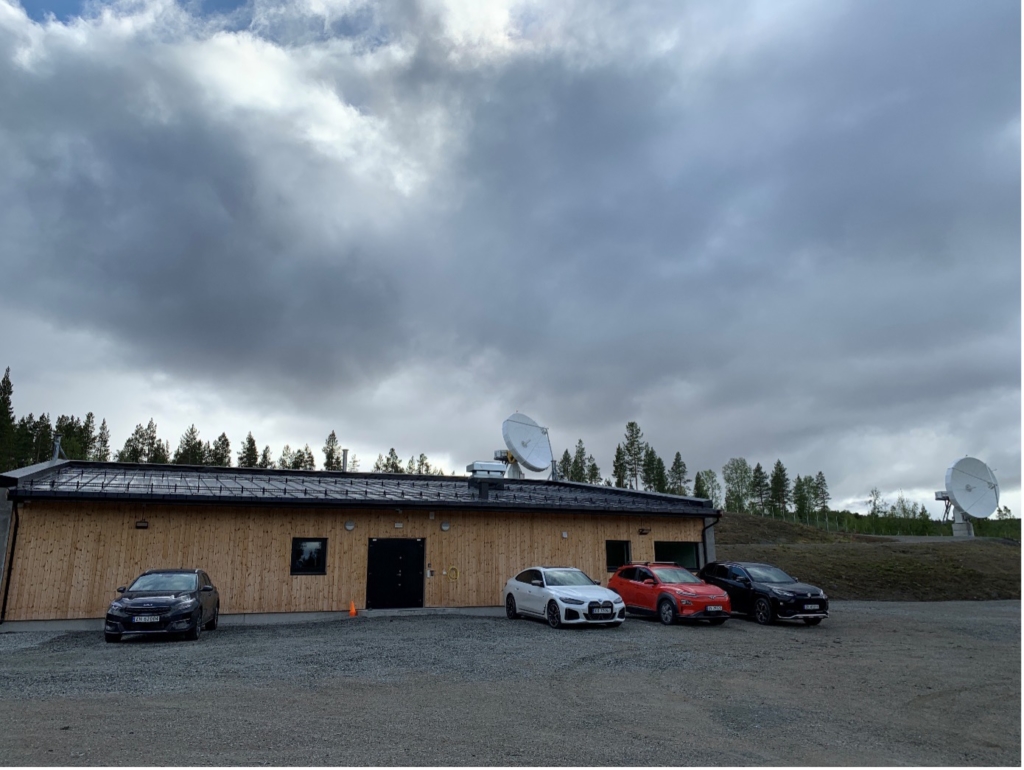
The purpose of the ongoing end-to-end testing of the ground segment is to secure that the ground stations are properly connected with the customers such that all communication and exchange of data, for example ephemeris, telemetry and commands, are transferred according to plan.
The two-week long test campaign involves teams of personnel from Space Norway, the satellite provider Northrop Grumman and the ground segment provider KSAT. The customers are also an active part of the test campaign, and representatives of the Norwegian and US Armed Forces as well as Inmarsat are standby to confirm data reception at their respective ends, as well as ready to report any possible deviations from specification. In this respect, the end-to-end test campaign serves as a first full-scale test of the supply chain from the satellite operations control center to the customers.
Practice makes perfect
Maintaining a stable operation as well as security are the most important features for most IT systems, and nowhere is this as important as it is in space. If a problem occurs, obviously there is no one to send. Consequently, all software and all physical parts of a satellite are thoroughly tested and retested before launch.
As a part of the delivery from satellite builder Northrop Grumman, a test environment is established on the ground where a simulator is a critical component. This satellite simulator is a digital copy of the ASBM satellites, and it is used for testing the ground stations before the actual satellites are launched into their highly elliptical orbit. The simulator is used to train the satellite engineers and operators for a range of different scenarios and all these practices are constantly evaluated.
The satellite simulator and the test environment have been through an acceptance test in Norway and is a part of the satellite operations center. The simulator enables efficient and secure testing and evaluation of every single procedure within each sub system on each satellite, such as propulsion, power, temperature management and handeling of payloads, data and TT&C (Telemetry, tracking and command).
The ASBM programme sent all its engineers and satellite operators to the British satellite operator Avanti for several months during 2022. Now, the staff spends more time in the simulator to be as prepared as possible when the satellites are sent into orbit over the poles. Once the programme enters the operational phase, the simulator will be used to test planned maneuvers before transmitting them to the satellites and for the operators to practice different scenarios.
27/06/2022
Press release: EPS-R payload delivered and begins integration into the ASBM host vehicle
Date June 8th 2022
EL SEGUNDO, Calif. — Space Systems Command (SSC) delivered the first of two Enhanced Polar Systems-Recapitalization (EPS-R) payloads to begin integration on Space Norway’s Arctic Satellite Broadband Mission host space vehicles. The second payload is expected to be delivered for integration onto the second host space vehicle by the end of July 2022. SSC’s joint partnership with Norway is allowing the hosted payload to deliver capabilities three years ahead of schedule with potential savings of up to $900 million. A successful integration and testing process will highlight the effectiveness of the U.S. Space Force, Norway’s Ministry of Defense, and Space Norway’s strategic partnership.
Read this Space News article on the Arctic connectivity competition
This is a Space News article written by Jason Rainbow, May 13th 2022.
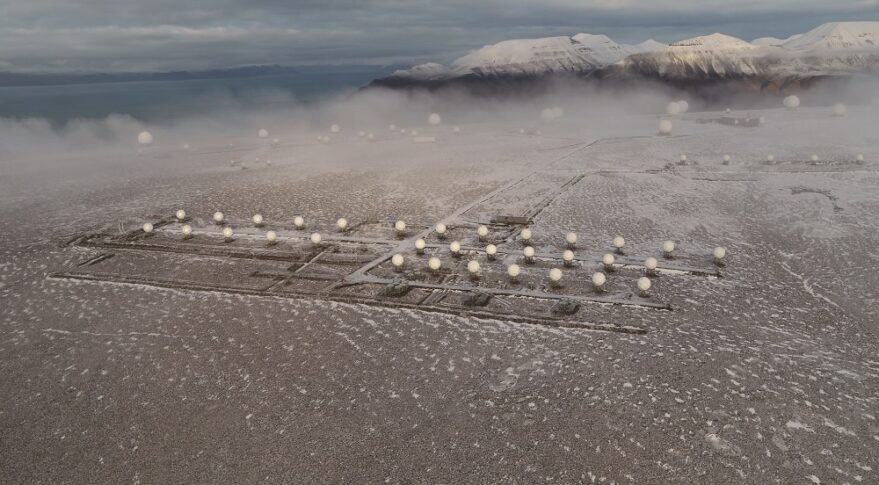
Satellite operators are venturing into the Arctic to improve connectivity as the changing atmospheric and geopolitical climate drives demand for more bandwidth in one of Earth’s last remaining frontiers.
Fledgling and established operators alike see a growing market for capacity in areas best served by satellites in non-geostationary orbit (NGSO).
OneWeb and SpaceX’s Starlink, the world’s largest broadband megaconstellations in low Earth orbit (LEO), already have polar-orbiting satellites in their expanding fleets.
SES is looking at using inclined planes to cover the Arctic with O3b mPower, its next-generation medium Earth orbit network that aims to start deploying satellites this year.
The Arctic Satellite Broadband Mission (ASBM) — a joint venture between British satellite operator Inmarsat, the Norwegian Ministry of Defense and the U.S. Air Force — plans to deploy two satellites in highly elliptical orbits on a SpaceX Falcon 9 in 2023 for polar coverage.
Russian Satellite Communications Co. (RSCC) has outlined plans to add four satellites in highly elliptical orbits to its fleet in the following years to extend coverage deep into the Arctic Circle.

